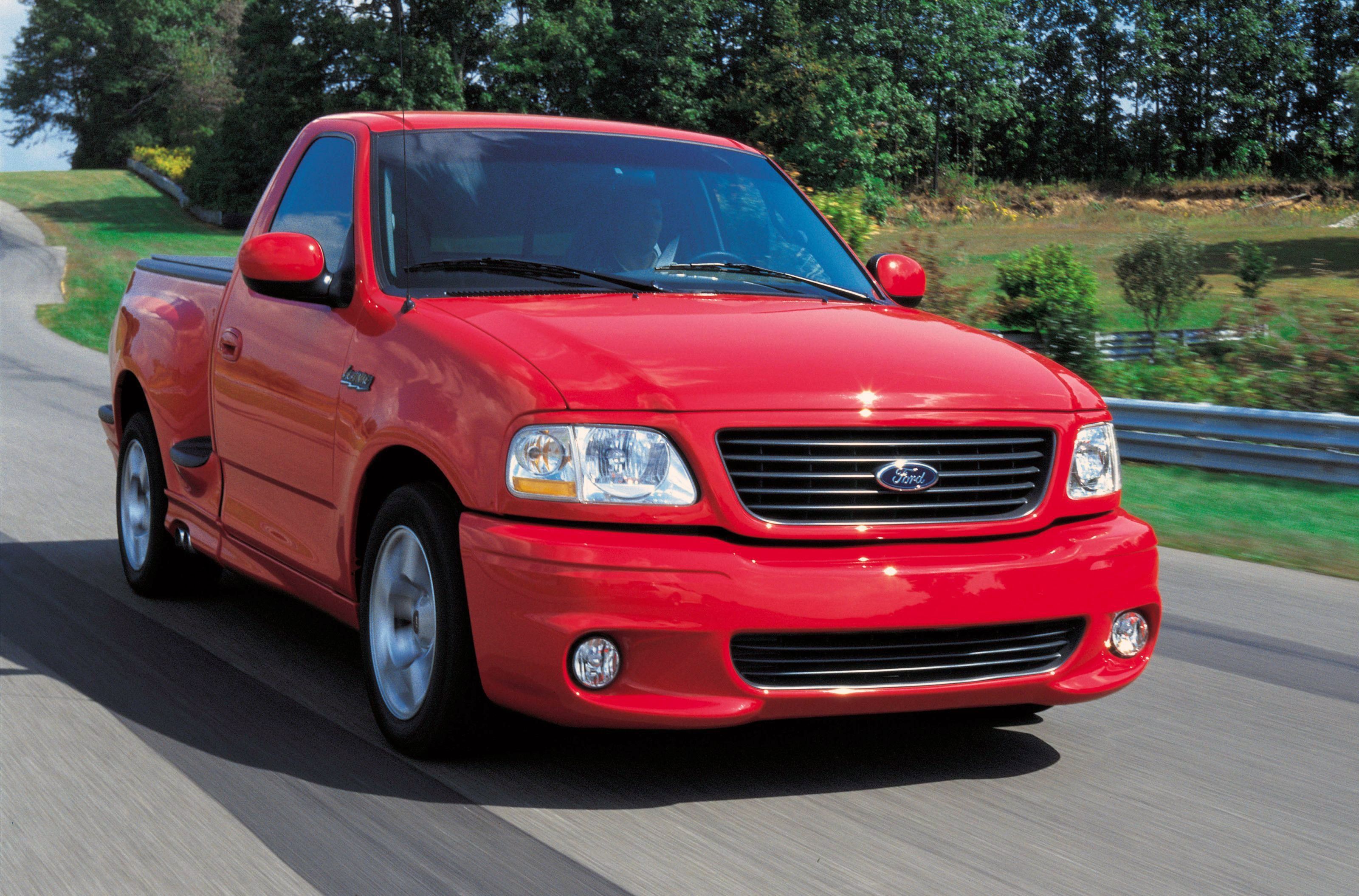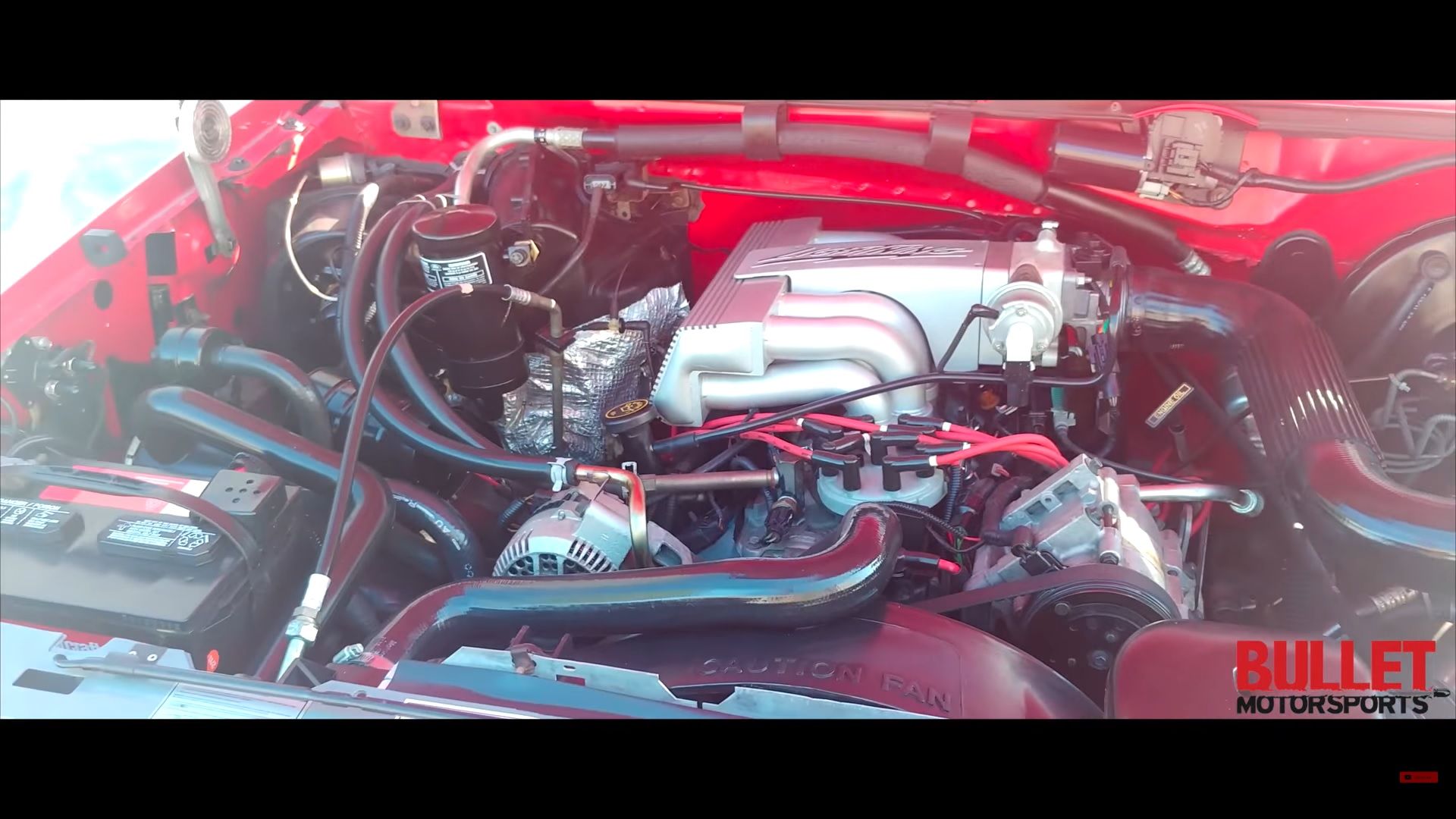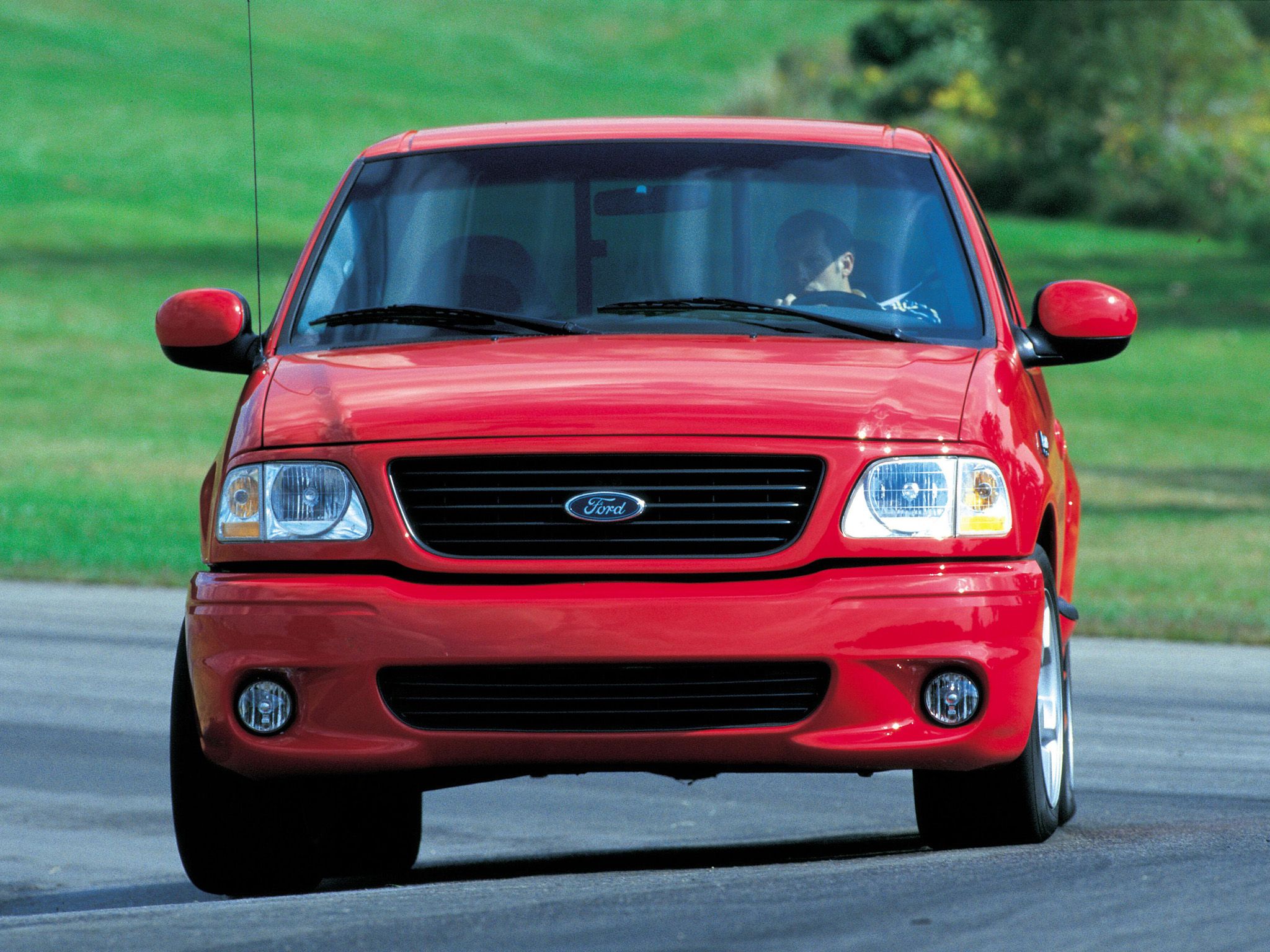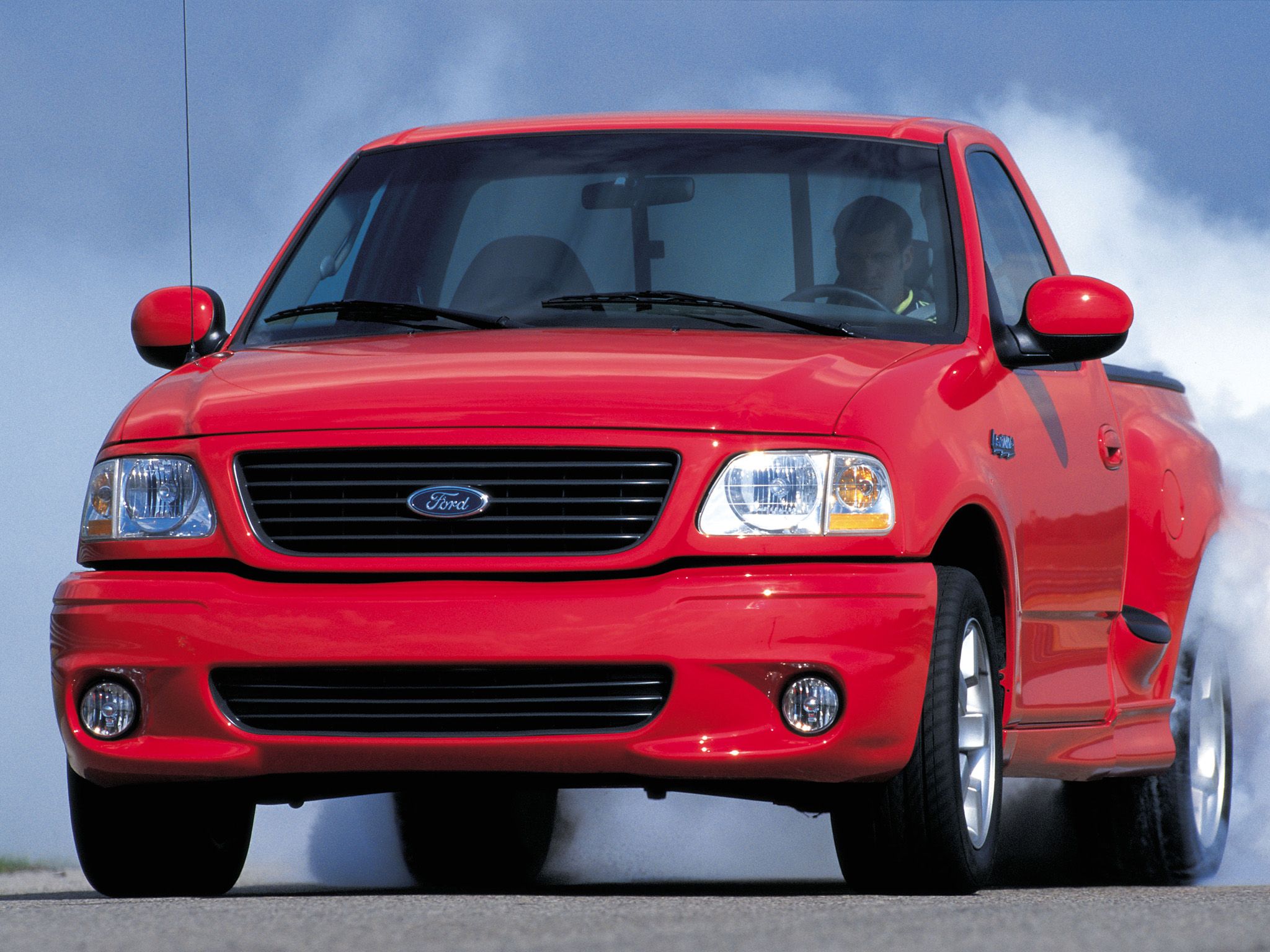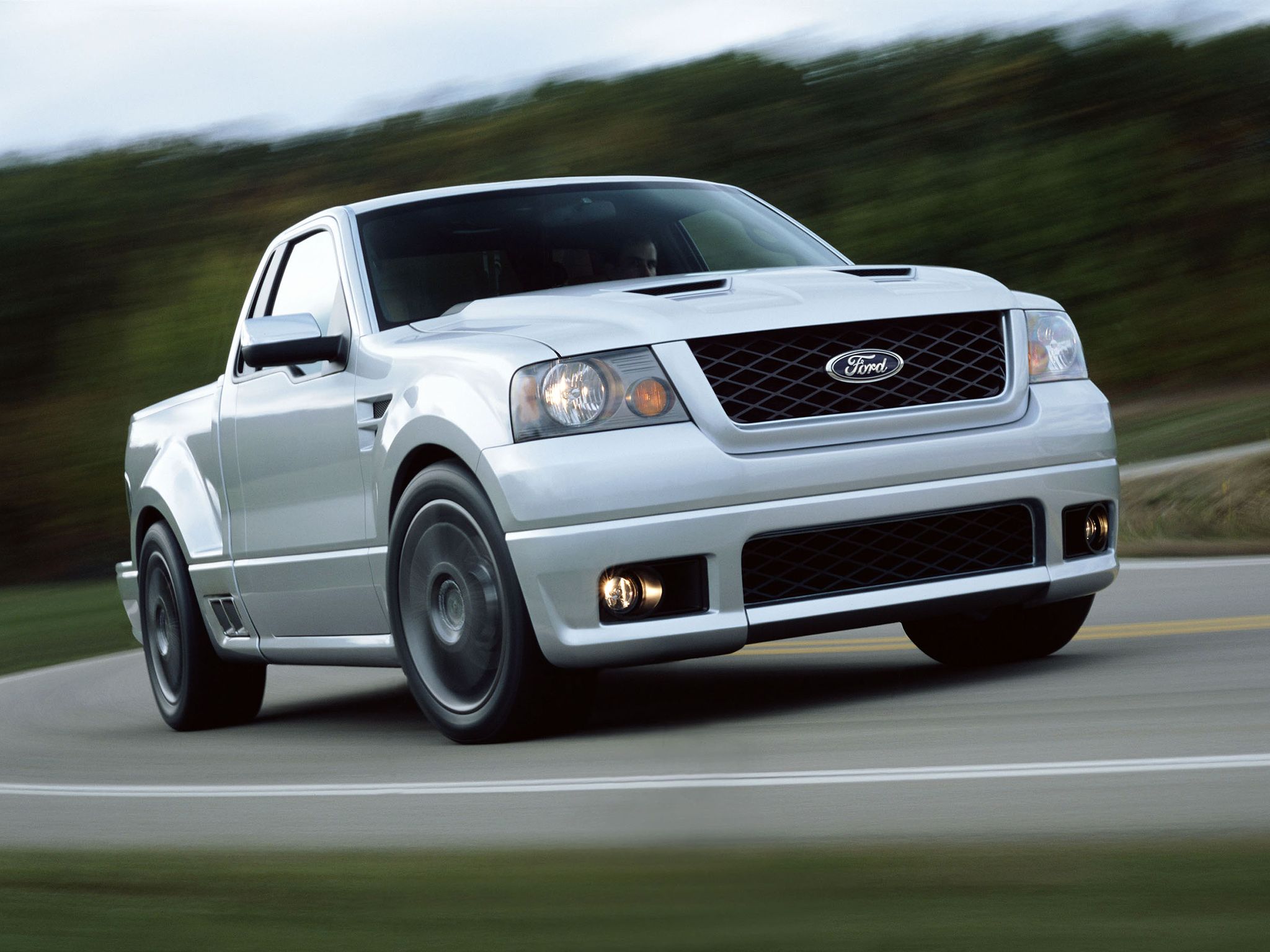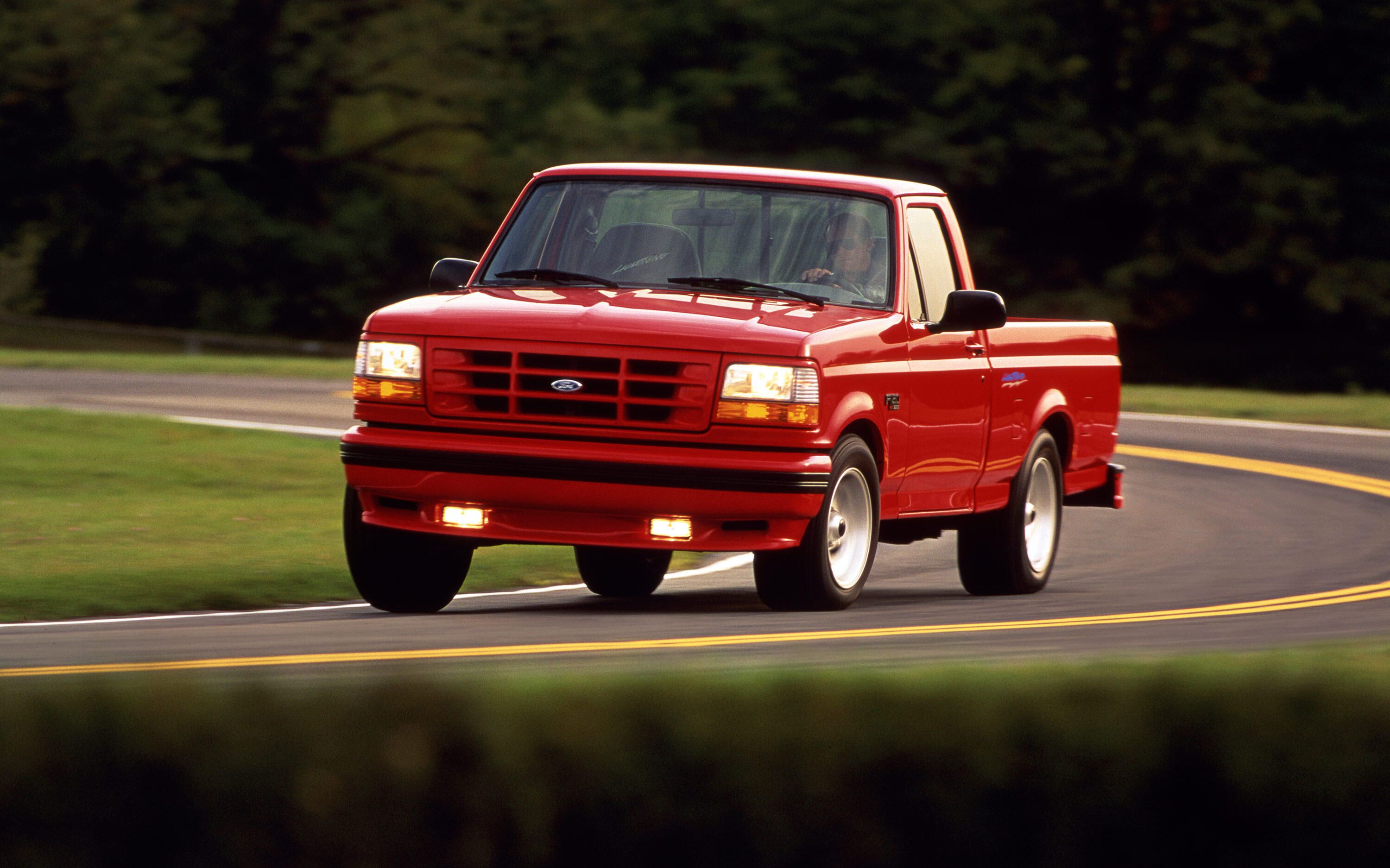Back in the day, automakers like Dodge, Chevy, and GMC, tried to develop pickup trucks that were more than their towing and payload prowess. They came up with performance versions of their respective trucks, but could not break this perception people had about trucks being straight-line sprinters and failed to create a niche. Ford, too, threw its hat into the ring with a product called the Lightning. The Lightning stayed around for a decade before going down the same way as its counterparts. But, does that mean it was a bad truck? No, sir!
With the moniker being resurrected again, we thought it would be a good time to remember the original truck and remind you that the legendary nameplate is more than just a guest star in the Fast and Furious movie or Ford’s first electric truck, the 2022 F-150 Lightning.
How Did Performance Trucks Happen?
Pickup trucks today are vastly different from what they used to be. Today they are powerful, fast, and luxurious enough to put premium sedans to shame. Although seeing them in a different light today is not uncommon, back in the day it sure was. I’m talking about trucks like the Dodge SRT-10, the GMC Syclone, etc. Unfortunately, none of them had a good run, and the Ford SVT Lightning was no exception.
Ford’s Special Vehicle Team, the arm responsible for Ford’s high-performance vehicle development, was commissioned to come up with a fast truck based on the F-150. The team developed it based on the ninth- and 10th-gen F-150, but soon pulled the plug on it. In 2010, the company came up with the Raptor and it was touted as the spiritual successor to the Lightning, but focused on off-roading capabilities more than performance.
The Debut Of The GMC Syclone’s Worst Nightmare
Ford introduced the first-gen SVT Lightning based on the ninth-gen F-150 in 1993. It was built at Ford’s plant in Wayne, Michigan. Brought in as a competitor to the GMC Syclone and the Chevy 454 SS, the automaker commissioned SVT to develop and market it. The GMC Syclone was a pure performance truck and lost out on all other capabilities, like towing, off-roading, etc. This is where Ford tried to capitalize – offer a truck to the mass markets that could do everything an F-150 could and then some more.
The SVT Lighting was powered by a slightly tweaked version of the 351 Windsor V-8. It featured GT-40 heads and hyper-eutectic pistons. The 5.8-liter naturally aspirated engine made 240 ponies at 4,200 rpm and 340 pound-feet of torque at 3,200 rpm. This was 40 horses fewer than the GMC Syclone, but 10 more than the Chevy 454 SS. A heavy-duty four-speed gearbox from the F-350 was plonked in here that sent power to the rear wheels exclusively. Courtesy of this, the Lightning took around seven seconds to sprint to 60 mph from rest and had a top speed of 110 mph.
Ford and SVT had two V-8s at their disposal – the Windsor and the Cleveland – to plonk under the Lightning’s hood. However, they went with the former since they wanted to make sure the truck had good acceleration and throttle response. While the Cleveland can rev higher, the Windsor offers more grunt at the lower end of the torque bandwidth, thus helping with those quick off-the-line starts. To help the cause further, a 4.10 axle ratio was offered.
Although these power outputs were quite less than the Syclone’s numbers, the Lightning could do what the former couldn’t – tow more than 2,000 pounds and be taken off the roads. The Lightning could go light off-roading and also tow up to 8,400 pounds. So, you were essentially getting Mustang-like performance with F-150’s practicality. Sweet, eh?
The suspension setup consisted of Twin Beam coil springs at the front and a solid axle with leaf springs at the rear. Monroe Formula GP shocks and a one-inch stabilizer were offered at the front as well as the back. The Lightning was lowered one inch up front and 2.5 inches at the back when compared to the standard F-150.
To wrap it all off, it came with Firestone Firehawk GTA tries wrapped around 17-inch five-spoke Aluminum wheels. For the 1993 model, Ford produced the Lightning in two colors – Black and Red. For the ’94 and ’95 models, White was added to the mix. To further differentiate it from the standard F-150, ‘Lightning’ badges and accents were slapped all around the truck.
Depending on the model year, the price of the first-gen SVT Lightning was anywhere between $19,500 and $23,000.
First-gen Ford SVT Lightning specifications
|
Engine |
5.8-liter 351 Windsor V-8 |
|---|---|
|
Power |
240 HP @ 4,200 RPM |
|
Torque |
340 LB-FT @ 3,200 RPM |
|
0 to 60 mph |
7 seconds |
|
Top Speed |
110 mph |
Ford Took Its Time To Bring The Second-Gen Lightning
The second-generation SVT Lightning came four years after the first-gen was shelved, but it was worth the wait. Based on the tenth-gen F-150, the second-gen was a big improvement over its predecessor and ironed out all the wrinkles from its first attempt. This time, it came with a 5.4-liter V-8 engine, but was paired to an Eaton Gen IV Supercharger and a water-to-air intercooler.
It made more power, too. For the 1999 and 2000 models, it made 360 horses and 440 pound-feet of torque. The 2001 to 2004 models were given a light boost, with the engine now churning out 380 ponies and 450 pound-feet of oomph. The power outputs cut down the 0-60 mph time by one full second! Instead of taking 6.2 seconds to 60 mph from rest, the 21st-century iterations took just 5.2 seconds.
Power was again sent to the rear wheels exclusively and the gearbox was also borrowed from the then-current F-350 model, which was a four-speed automatic. The axle ratio on the 1999 and 2000 models was 3.55 with a 3.5-inch aluminum driveshaft, whereas for the models post that, it was 3.73:1 with a 4.5-inch aluminum driveshaft. Furthermore, a 9.75-inch rear axle with traction-lock limited-slip differential also made the cut here. These specs, however, led to a fall in the towing capacity. It was now rated at just 5,000 pounds, a drop of 3,400 pounds when compared to the first-gen Lightning.
The top speed stayed the same at 140 mph. But compare these to the first-gen specs and you’ll know what I’m talking about. Surprisingly, a production SVT Lightning clocked 147 mph in 2003 and it was declared the “World's fasted production truck" by Guinness World Records. For those of you wondering how it did on a drag strip, the ’99 and ’00 models took 14.6 seconds to finish the quarter-mile distance with a trap speed of 97 mph.
As for the suspension setup, the second-gen SVT Lightning came with upper and lower A-arms, SVT coil springs, Bilstein shocks, and a 1.2-inch stabilizer bar upfront. At the rear, it featured staggered Bilstein gas-charged shocks, a five-leaf spring setup, and a 0.9-inch stabilizer bar. The stance was lowered by 1.5 inches at the front and two inches at the rear as opposed to the standard tenth-gen F-150.
Ford did its best to differentiate it from the standard F-150 and even brought in a bigger color palette. As before, the truck came with badges and accents to show laymen this wasn’t an ordinary truck. Ford added four more exterior shades to the existing palette of three shades, with the additions being Silver Metallic, True Blue, Dark Shadow Grey, and Sonic Blue. Ford introduced new shades every year to keep the truck fresh in its five-year run. As for the shoes, the SVT Lightning came with bigger 18-inch wheels this time wrapped in low-profile 295/45 section Goodyear Eagle tires.
The truck was priced under $30,000 in its run and it seemed to be worth every penny.
The Third-Gen SVT Lightning Came With A Curse
With the tenth-gen F-150’s demise, Ford also halted the production of the second-gen SVT Lightning. But, like before, a new Lightning based on the 11th-gen was expected. The automaker even revealed the third-gen at the 2003 Detroit Auto Show. Ford, again, exceeded expectations and revealed a fantastic concept version with humungous upgrades. This time around, it featured a 5.4-liter, all-aluminum V-8 supercharged engine that made 500 horses and 500 pound-feet of twist! The only other F-150 more powerful than this is the recently unveiled F-150 Raptor R which makes 700 ponies and 640 pound-feet of oomph.
The concept featured big 22-inch wheels wrapped in low-profile Goodyear tires that were chunkier at the rear. Brembo brakes with cross-ventilated discs, independent rear suspension, new steering setup, etc. were part of the new package. Mind you, all this in 2003. But, Ford didn't go ahead with the production version and that was the end of the Lightning badge…
The ‘Lightning’ Has Been Resurrected!
… until now. Back in May 2021, 'Lightning' made an official comeback in the form of an electric truck with the same name - Ford F-150 Lightning. Unlike our apprehensions about the ‘Mustang’ moniker used on the Mach-E EV, we are quite pleased with the ‘Lightning’ badge being slapped on the electric F-150. The yesteryear Lightning can be considered a colloquial ‘flop’, but even decades later, it enjoys strong brand recall. Lightning is also a clever wordplay when used on an electric truck. Also, the fact that Ford is reviving it on a vehicle that will be the bread and butter for the automaker moving forward further cements its legacy.
Why Did Ford Shelve The SVT Lightning?
Coming back to the OG Lightning, the reason for shelving it was the sales numbers it was clocking. In its first two-year run, Ford managed to move just 11,563 examples, and around 28,000 examples in the second run of five years. These numbers may sound good enough to keep it in production given it was a niche model, but the F-Series has been the best-selling model in the States for over four decades. To put things into perspective, Ford sold close to 1.9 million F-Series trucks between 1993 and 1996, and less than 12,000 of these were SVT Lightning. That’s around 0.65-percent of the total sales. So, yeah, the Lightning’s numbers were pretty dismal and not worth keeping the assembly line busy for.
Reviving Buried Nameplates From The Ashes Is The New Norm
There’s no denying that a revived badge creates more hype than a new one. There have been so many products lately from multiple automakers that feature the resurrected badges, like Defender, Grand Wagoneer, and Hummer, to name a few. Ford also brought back the Bronco and the Maverick badges apart from the Lightning. So, there’s no question that reviving a badge markets and publicizes the vehicle more than a new badge that comes with no history or legacy attached. Let’s wait and watch what old moniker will be revived to christen a new vehicle.

